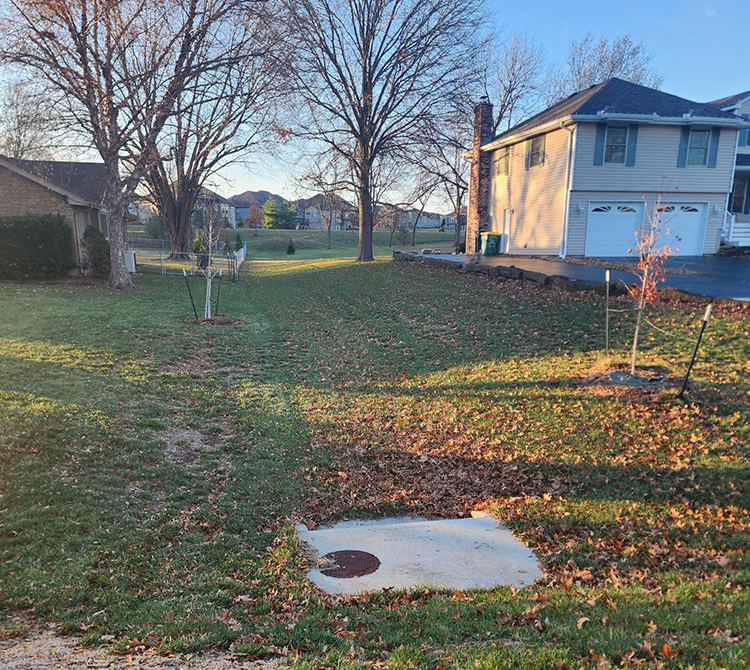Stormwater Improvements Protect Overland Park Residents from Flooding
Posted on Wednesday, December 14th, 2022 by Affinis CorpIn Our Communities, tagged in

Residents in Overland Park, Kansas were experiencing flooding on 170th Terrace. A new neighborhood to the south had created additional run-off. The excess water was causing the overflow of ditches in the area, and water was running over the street. They needed proper stormwater control to capture the extra water. The city selected the Affinis construction engineering team to oversee construction of the project.
The 170th Terrace Stormwater Project included the placement of stormwater inlets and reinforced concrete pipe (RCP). Road repairs were also made, along with final grading. To return the area to its original state, driveways were redone that had been taken out and trees were replanted. For erosion control, the contractor also seeded and planted in the area.
For this effort, our team monitored the day-to-day activities. We kept up with daily quantities, tracking how much linear feet of pipe was used. Partnering with the contractor, we helped to make sure everything was constructed according to plan. We also worked closely with residents and held weekly meetings with the City of Overland Park, Kansas to keep them informed.

Having our construction engineering team onsite offered numerous benefits for the city. The primary advantage was that we could be the main point of contact for residents. We were onsite daily and could field questions as they arose. Our team sent weekly rundowns and photos of the site to the city, so they could stay in the loop, while focusing their energies on other projects. They also had the ability to contact us directly at any given time and see what was going on. We acted as their eyes and ears on the project.
During the construction of these improvements, we worked with residents to solve any issues. For example, we collaborated with the contractor to resculpt a slope and deescalated any issues that arose. After the project was complete, we asked residents if they were satisfied and if there was anything else we could do. This supported the city in their efforts to maintain positive relationships with their community.
We also helped the contractor in their role as well. We fielded resident questions on site, so the construction team could focus their efforts on making the stormwater improvements. We kept the project moving, by answering the contractor’s questions as well. Instead of waiting to schedule a meeting with the city, we could respond right away, while at the project site. Because we kept track of daily quantities and the amount of linear feet connected, the contractor no longer had that time-consuming responsibility.
The final result moves the community forward by preventing flooding in this local neighborhood. Now, the homes of area residents are protected.